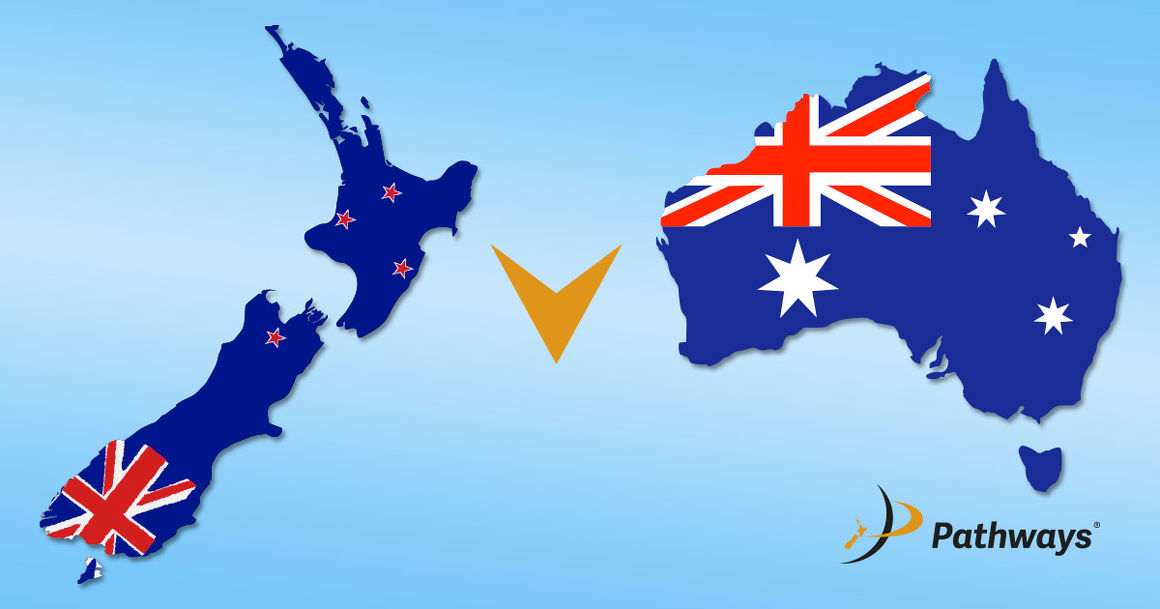Ready to begin your immigration journey?
Let’s get started by planning the first steps together now.Meet Our Team

Net overseas migration in Australia for the year to June 2024 is forecast to be 375,000 and just under 1.5% of Australia’s 26 million population. By comparison, New Zealand’s net migration for the year to March 2024 was 111,000 and represents around 2.2% of our 5 million population. On this basis, New Zealand’s migration gain was significantly above that in Australia, but it is Australia which has now introduced much more restrictive immigration policy settings for the coming year and with the aim to reduce net migration down to 260,000.
The main area of change in Australia is in the international student sector. A record high 700,000 international students are now studying in Australia. With international students currently making up 42% of all temporary visa holders entering Australia the Government has instigated moves to “deter” international students, stating that this is due to the high financial burden many students face, and the limited work opportunities. The changes are probably also a consequence of the many other problems that have been experienced, with many students not being genuine about, and/or following through, on their original study intentions as well as many students studying courses with dubious academic outcomes. This tougher stance has seen some 50,000 student visa applications already rejected in the 4 months to February 2024.
Changes include a new genuine student test, higher English requirements, reducing the age for graduate students (from 50y to 35y), limiting the maximum duration of some studies and, significantly, capping the number of students. The high cost and availability of student accommodation is also a contributing factor, but universities who can build new student accommodation may avoid any cap of their student numbers.
While New Zealand education institutions will benefit from this Australian “clamp down” we would caution care. New Zealand has been adversely impacted by a number of international student “challenges" in the past, and if we are now to be more favourably considered then we need to be proactive in setting clear policies to attract and manage the students New Zealand most wants. Above all, we must avoid the proliferation of institutions and courses being set up specifically to target the international student dollar. Achieving a premium for a quality education experience, which can be suitably managed, marketed and sustained, is preferred over the “numbers game” that the sector has played in the past. Having a maximum ratio of international students to NZ students could be an interesting start? “Reviving” international education was part of the Government’s election plans so it will be interesting to see how it applies any learnings from the Australian situation.
Australia is introducing visa programmes to “curry favour” with key trading partners such as the 3,000 visa places for Indian graduates (and some professionals) and extending the maximum validity of business visas for Indian nationals to 5 years. What will NZ do?
Australia is also scrapping its Business Innovation and Investment visa programme, after having previously scraped its Significant Investor Visa earlier this year. While this would normally lead to more migrant investors considering New Zealand, the reality is that our Active Investor Plus category is complex, high risk, and is simply not practical or marketable, and the uptake since its’ introduction in late 2022 has been “underwhelming”, to say the least.
The Australian immigration changes will create a range of opportunities for New Zealand, and particularly within the international education sector. It will be interesting to see how the Australian changes impact on the New Zealand immigration policy settings.
Meet Our Team
We use cookies on our website to provide you with the best experience. If you would like to know more about our privacy policy, take a look at our Privacy Notice
 11 Jun 2024
11 Jun 2024